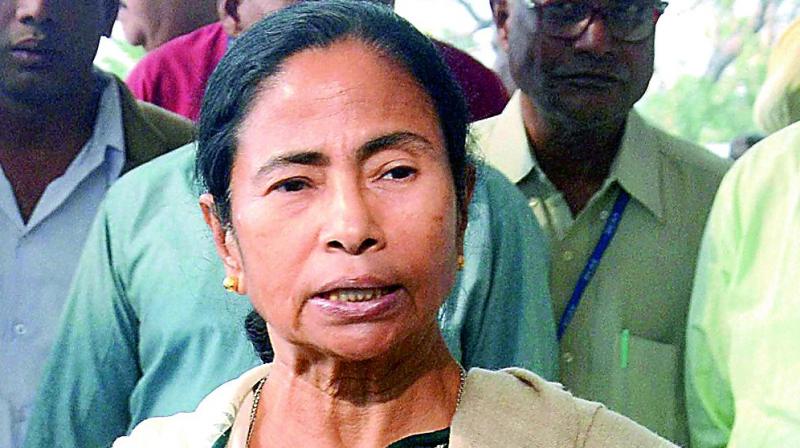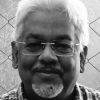Vote 2019: Inclusion is key to Opposition unity
The BJP would have a field day claiming that it was a “Modi versus a Nobody†contest.

With their very survival at stake before the formidable election machine of the ruling BJP, the Opposition is trying to forge unity with remarkable political intelligence. By meeting top Opposition leaders, including former Congress president Sonia Gandhi, in New Delhi recently, West Bengal chief minister Mamata Banerjee seems to have scuttled attempts that could have divided the Opposition and helped the BJP. Mr K. Chandrasekhar Rao (or KCR) of the Telangana Rashtra Samithi (TRS) had earlier tried to get her support for a united front of regional parties, fuelling speculation about a non-Congress, non-BJP “Federal Front”. However, by approaching the Congress, Ms Banerjee has demonstrated that her focus is on an inclusive front. In New Delhi she not only met the Opposition leaders, she also invited disgruntled BJP leaders — Yashwant Sinha, Arun Shourie and Shatrughan Sinha — who are openly critical of the leadership and governance of Prime Minister Narendra Modi and party president Amit Shah. Ms Banerjee’s carefully orchestrated approach towards Opposition unity to ensure a direct contest between the BJP and the Opposition seems to square with what Mr Shourie described in an interview to NDTV as the “Yashwant Sinha formula”. Ms Banerjee’s approach seems to accept rather than ignore some basic political realities. It recognises that the Congress alone can mount a direct challenge to the BJP in some states — for example, in Rajasthan, Madhya Pradesh, Chhattisgarh, Punjab and Karnataka. It also recognises that the party has a pan-Indian organisational network. Therefore, it accepts the necessity of including it in the bid to challenge the BJP across the country.
However, it also recognises that the dominant parties in several other states are regional, and not national. Because they alone are in a position to take on the BJP in their respective states, they too must be brought onto a common national platform. However, not many of them will accept an Opposition front centred on the Congress. Therefore, a two-stage orchestration of Opposition unity is proposed. First, getting the regional parties together, and in the second stage, forging a pre-electoral alliance between the front of regional parties and the Congress. A likely sticking point in bringing the regional parties together is who would be its leader — say, KCR, Ms Banerjee, Naveen Patnaik or N. Chandrababu Naidu. To overcome this problem, the Opposition is likely to follow what Yashwant Sinha has called the “collegium” approach. The suggestion is that parties in the Federal Front meet by rotation in the different states. The leader of the dominant party in the state can be the convenor of the Federal Front meeting in his or her state. After a series of such meetings as a confidence-building measure, the front can elect a convenor through consensus to run its secretariat. This could be an elder statesman, someone who is not a contender for any post after the election. In this manner, ego-clashes or one-upmanship could be avoided.
In the second stage, the Federal Front will have to forge a pre-electoral understanding with the Congress. Wherever the Congress is the dominant party of challenge to the BJP, it would have to accommodate the relevant regional parties through seat adjustments. Equally, wherever the Congress is not in a strong position but has a significant presence, the Federal Front would give it a due share of seats. This approach to Opposition unity is significantly different from the 1977 model, in the aftermath of the Emergency. Then a large number of non-Left Opposition parties had merged their identities into the Janata Party. Since the new party could not be registered in time, the merging parties contested on the symbol of the Bharatiya Lok Dal of Charan Singh. In the current experiment, no party will give up its identity or election symbol. They would contest individually but in a concerted manner. In 1977, the candidates for most of the North Indian seats were believed to have been selected under the leadership of Charan Singh and the rest by Morarji Desai. This time around, the dominant party in a particular state could play that role. This will not be an easy task in states where there is more than one major challenger to the BJP — such as in Delhi (Aam Aadmi Party and Congress), Haryana and Punjab (Congress and AAP), Uttar Pradesh (Samajwadi Party, Bahujan Samaj Party and Congress) and Odisha (Biju Janata Dal and Congress).
However, while the operationalisation of Opposition unity may be difficult, the arithmetic is simple. In the 2014 general election, the BJP got 31 per cent of the votes while 69 per cent were divided amongst the rest. Even if half of the latter can be consolidated through direct contests, an effective challenge can be mounted against the BJP. The biggest pitfall for Opposition unity would be an attempt to declare a prime ministerial candidate in advance. The BJP would have a field day claiming that it was a “Modi versus a Nobody” contest. The Opposition leaders seem to have decided not to fall into this trap. The leadership issue, after all, needs to be addressed only after securing a majority in the next Lok Sabha. The programme of the Opposition would have to be enunciated in broad terms, avoiding “jumlas” or meaningless sloganeering. Some Opposition leaders have suggested that their agenda could focus on the issues agitating the public mind — protecting the Constitution and safeguarding democratic institutions, addressing agrarian distress, employment generation, ensuring women’s safety and security and protecting the rights of minorities and dalits. This would help not getting bogged down in details and promises that cannot be kept as in the case of Candidate Modi. At this stage it is too early to join the disparate dots to create a neat picture. It is difficult to predict, for example, how many regional parties would join the Federal Front and what the attitude of the Congress to such a formation might be. However, what cannot be doubted is that the West Bengal chief minister has taken a cautious but a sure-footed step in the direction of ensuring Opposition unity.

